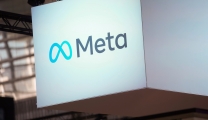1. Craft job descriptions that highlight the flexibility
When writing job descriptions, it’s crucial to reflect the flexible aspects of the role. Doing this accurately is a subtle art, requiring more than just tagging the job as “flexible.”
Start with remote work: does the role allow fully remote work, or does it involve a mix of office and remote days? Be specific.
For flexible hours, specify whether that means complete freedom or if there are core hours where the employee must be available.
Clearly outline the shared responsibilities and how the arrangement might work for job-sharing roles.
When you’re clear about these details from the beginning, candidates can better decide if the role suits their needs — boosting the chances of a successful placement for you.
LinkedIn data reveals that job posts emphasizing well-being, flexibility, and company culture receive 46% more views and 49% more applications than those that don’t mention these factors.

Companies should authentically deliver on these priorities to attract and engage candidates effectively and showcase their commitment to well-being, flexibility, and culture in job posts and employer branding.
2. Demonstrate flexibility during recruitment
Potential candidates aren’t just looking at the job description; they’re evaluating their recruitment experience to get an idea of your company’s work culture.
Flexible interview scheduling is an effective demonstration of this commitment. Offering candidates a range of times or even days for interviews shows respect for their time.
Virtual interviews further demonstrate your organization’s embrace of flexibility.
It sends a powerful message — the organization values work-life balance and has the necessary tools to make it possible.
3. Navigate the flexibility discussion during interviews
Flexibility should be a focal point of discussion during interviews.
Recruiters can ask questions such as –
“How do you envision your ideal work schedule?”
Or
“What kind of flexible working arrangements would best support your productivity?”
By inquiring about a candidate’s flexibility and work-life balance preferences, companies can gauge their fit with the organization’s policies and show their commitment to these values.
This is specially vital as over 75% of senior candidates view recruitment processes as a key influence on their company perception.
4. Promote flexible work options
Various flexible work options exist, each with unique employee and organization benefits.
- Part-time roles, for example, offer workers more personal time while enabling companies to tap into a wider talent pool.
- Flextime, which allows employees to choose their working hours within defined limits, provides autonomy and can lead to increased productivity.
- Compressed workweeks result in fewer but longer workdays, which can enhance employee satisfaction.
- Telecommuting, or remote working, reduces commuting time and improves work-life balance.
When implemented thoughtfully, each option can contribute to employee wellness, higher retention rates, and enhanced company reputation.

5. Maintain post-hire flexibility
Even after successful hiring, maintaining flexibility is key.
Regular check-ins about flexible work arrangements help address any concerns or necessary adjustments.
This ensures that flexibility policies continue serving employee needs and business demands.
In fact, offering flexible hours could make 24.33% of employees stay in their current job!
6. Take employee feedback
Taking feedback seriously and implementing changes when needed is crucial.
A proactive approach can prevent future complications, ensuring the organization continues to reap the benefits of flexible work arrangements.
Flexibility is not a static goal but an ongoing commitment to adapting and accommodating as business and personal landscapes evolve.
Embedding flexibility into your recruitment process, from crafting job descriptions to post-hire evaluations, isn’t merely a trendy strategy.
It’s an essential step towards meeting the demands of the modern workforce and leading the change in the recruitment landscape.












Replies to This Discussion